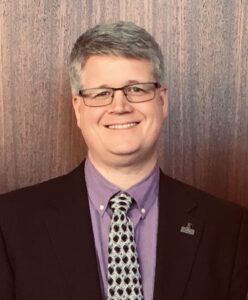Summary
Using geo-literacy skills, students can engage in learning about the Holocaust in new ways. How we map the Holocaust can both answer and raise important
questions. Knowles (2024) identified five challenges of mapping the Holocaust. Among the challenges, Holocaust maps tend to represent the actions of the perpetrators, perpetuate outdated narratives of the Holocaust, and ignore the complexity of the Holocaust. In this presentation, participants will engage with a lesson using the proximity of the Majdanek killing center to the town of Lublin as a case study. In this lesson, addressing inaction of bystanders explores the question: Could the residents of Lublin have witnessed the perpetration of genocide at Majdanek? The lesson unfolds in three phases. First, students interrogate historical maps of Lublin and maps from USHMM of Majdanek. Second, students then create their own topographical map of the Lublin area using GIS tools.
Session Focus
All Grade Levels | World/International | Holocaust, Inquiry, Geo-literacy
Conference Room
Winnebago
Meet the Presenters
 Bethany Sanders is a Secondary Social Studies teacher at Dutch Fork High School. She teaches a wide variety of classes including Human Geography, AP European History, and AP Comparative Government. She is currently an education doctoral student at the University of South Carolina where her research is focused on visual arts integration and visual literacy in the geography classroom. When she isn’t teaching, she is either coaching her school’s dance team or traveling!
Bethany Sanders is a Secondary Social Studies teacher at Dutch Fork High School. She teaches a wide variety of classes including Human Geography, AP European History, and AP Comparative Government. She is currently an education doctoral student at the University of South Carolina where her research is focused on visual arts integration and visual literacy in the geography classroom. When she isn’t teaching, she is either coaching her school’s dance team or traveling!
 Jeff Eargle is a Clinical Associate Professor in the Department of Teacher Education at the University of South Carolina, where he also serves as the Secondary Social Studies Program Coordinator. As a high school social studies teacher in the South Carolina public school system, he taught a range of social studies courses across both grade and learning levels. Additionally, Eargle was an Education Associate for K12 Social Studies Education at the South Carolina Department of Education where he implemented state-wide policy, provided professional learning for teachers, and was involved in the development of the current state standards. He is the coeditor of the forthcoming volume Teaching Holocaust Geographies in Middle and Secondary Schools: Promoting Inquiry into Space, Persecution, and Civic Engagement.
Jeff Eargle is a Clinical Associate Professor in the Department of Teacher Education at the University of South Carolina, where he also serves as the Secondary Social Studies Program Coordinator. As a high school social studies teacher in the South Carolina public school system, he taught a range of social studies courses across both grade and learning levels. Additionally, Eargle was an Education Associate for K12 Social Studies Education at the South Carolina Department of Education where he implemented state-wide policy, provided professional learning for teachers, and was involved in the development of the current state standards. He is the coeditor of the forthcoming volume Teaching Holocaust Geographies in Middle and Secondary Schools: Promoting Inquiry into Space, Persecution, and Civic Engagement.


